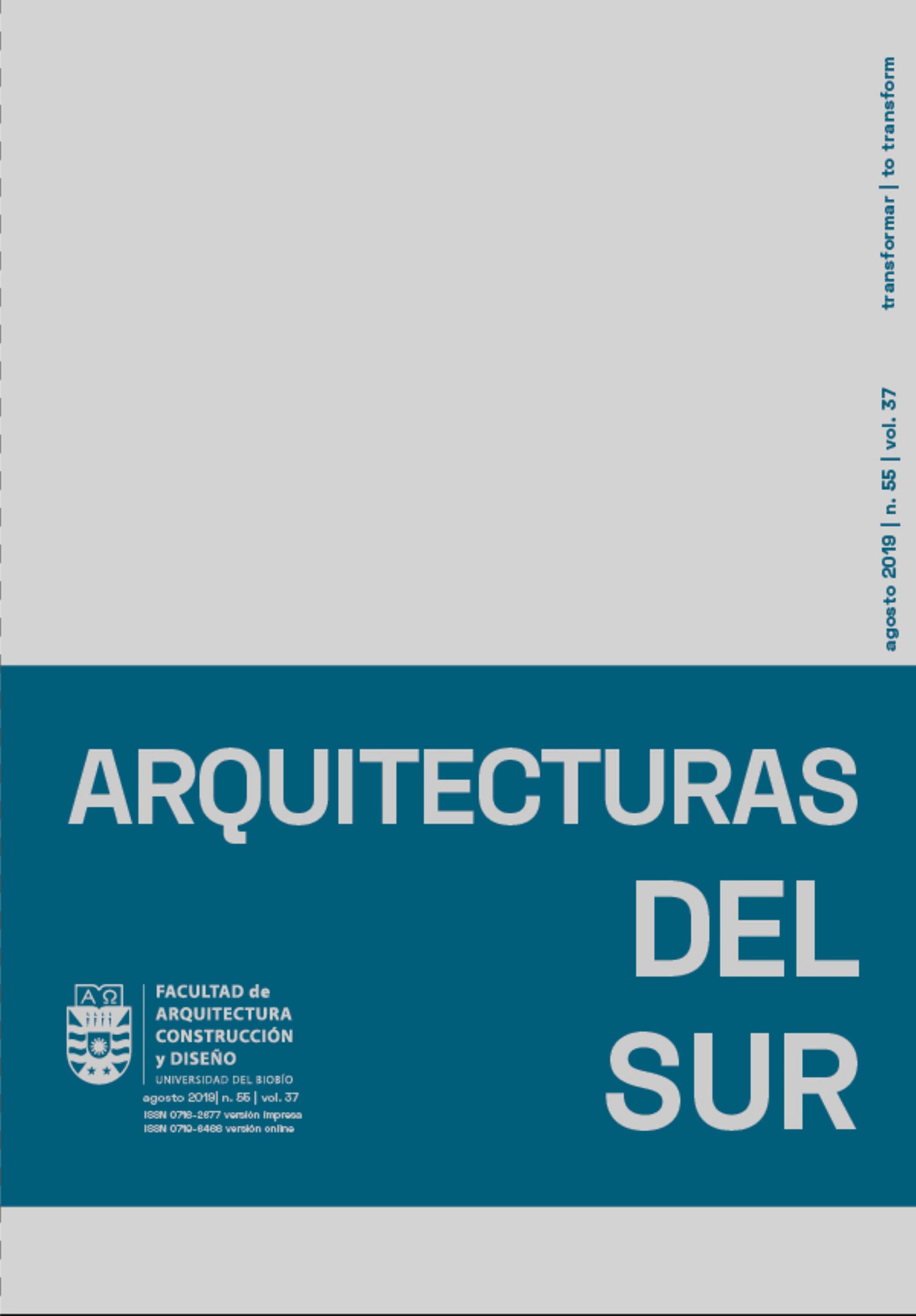The transformation beyond the form. Non-architectural contingencies on high-rise buildings in the Chilean press (2009-2017)
DOI:
https://doi.org/10.22320/07196466.2019.37.055.06Keywords:
High-rise buildings, newspapers, Chile, skyscrapers, architectural pressAbstract
The proliferation of high-rise buildings has transformed the physical physiognomy and symbolic density of intermediate and metropolitan Chilean cities. At this level, new problems have changed the configuration of urban debates, of those that occur inside as well as outside of expert spaces, that is, academia and its associated communities of practice. The present article investigates the possible transformation of high-rise buildings in the debates and news recorded in the Chilean press: from strictly speaking architectural objects to heterogeneous objects that are open to other kinds of association and, therefore, to other forms of policy and management. To this end, 482 pieces of press mentioning high-rise buildings, published by two national daily newspapers between January 2009 and June 2017 were studied. The analysis examined how the themes presented, their urban location, and the temporality of the facts related gave an account of the transformation of the frameworks of meaning the buildings are associated with, in contrast to their architecture.
Downloads
References
Aguirre, C. y León, D. (2008). Aspectos causales del precio de departamentos nuevos en la Comuna de Ñuñoa, Santiago de Chile. Urbano, 11 (18), 59-67. Recuperado de http://revistas.ubiobio.cl/index.php/RU/article/view/348
Aguirre C., Sandoval, C. y Alliende, J. (2018). ¿Impacta la futura línea de metro en los precios de departamentos? Un estudio para Ñuñoa y Santiago Chile. Urbano, 21 (38), 84-95. DOI: https://doi.org/10.22320/07183607.2018.21.38.07
Bernard, A. (2014). Lifted: A Cultural History of the Elevator. New York: New York University.
Callon, M. 1998. An essay on framing and over owing: economic externalities revisited by sociology. The Sociological Review: The Laws of the Markets 4 (1), 244-269. Oxford: Blackwell Publishers. DOI: https://doi.org/10.1111/j.1467-954X.1998.tb03477.x
Callon, M., Lascoumes, P. y Barthe, Y. (2001). Acting in an Uncertain World. An Essay on Technical Democracy. Cambridge: MIT Press.
Callon, M. y Rip, A. (1991). Forums hybrides et négociations des normes sociotechniques dans le domaine de l’environnement. La fin des experts et l'irrésistible ascension de l’expertise. Environnement, Science et Politique. Cahiers du Germes, 13, 227-238.
Callon, M. y Rip, A. (1992). Humains, Non- Humains: Morale d’une Coexistence. En J. Theys y B. Kalaoram, La Terre Outrage ́e. Les Experts sont Formel!, pp. 140–156. París: Autrement.
Collins, H. M. y Pinch, T. J. (1979). The construction of the paranormal: nothing unscientific is happening. The Sociological Review, 27, 237–270. DOI:10.1111/j.1467-954X.1979.tb00064.x
Glaeser, E. (2011). El triunfo de las ciudades. Cómo nuestra mejor creación nos hace más ricos, más inteligentes, más ecológicos, más sanos y más felices. Madrid: Taurus.
Harvey, P. y Knox, H. (2012) The Enchantments of Infrastructure. Mobilities, 7 (4), 521-536. DOI: 10.1080/17450101.2012.718935
Hommels, A., Mesman, J. y Bijker, W. (Eds.). (2014). Vulnerability in Technological Cultures. New Directions in Research and Governance. Cambridge: MIT Press.
Law, J. (2002). Aircraft Stories. Decentering the Object in Technoscience. Durham: Duke University Press.
Law, J. y Mol, A. (2009). El actor-actuado: La oveja de la Cumbria en 2001. Política y Sociedad 45(3), 75-92. Recuperado de http://revistas.ucm.es/index.php/POSO/article/view/POSO0808330075A
Star, S.L. y Ruhleder, K. (1996). Steps Toward an Ecology of Infrastructure: Design and Access for Large Information Spaces. Information Systems Research, 7 (1), 111-134. DOI: https://doi.org/10.1287/isre.7.1.111
Steadman, P. (2014). Building Types and Built Forms. Leicestershire: Matador.
Sullivan, L.H. (1896). The tall office building artistically considered. Lippincotts Magazine 57, 403-409.
Vergara Vidal, J. (2017). Verticalización. La edificación en altura en la Región Metropolitana de Santiago (1990-2014). INVI, 32 (90), 9-49. DOI: http://dx.doi.org/10.4067/S0718-83582017000200009
Downloads
Published
How to Cite
Issue
Section
License
The content of the articles published in each issue of Arquitecturas del Sur is the sole responsibility of the authors and does not necessarily represent the opinion of University of the Bío-Bío.
The authors will maintain their copyright; however, they will guarantee the journal the right to first publication and dissemination of their work. The publication of the article in Arquitecturas del Sur will be subject to the Creative Commons International license (CC BY-SA) that allows others to adapt: remix, transform and build on the material for any purpose, even commercially; share: copy and redistribute the material in any medium or format, as long as the authorship and first publication in this journal are acknowledged by citing them correctly, and their new contributions are under a license with the same terms.














 Programa de Información Científica/Concurso Fondos de Publicación de Revistas Científicas 2018/ Proyecto Mejoramiento de Visibilidad de Revistas UBB (Código:FP180007)
Programa de Información Científica/Concurso Fondos de Publicación de Revistas Científicas 2018/ Proyecto Mejoramiento de Visibilidad de Revistas UBB (Código:FP180007) 
